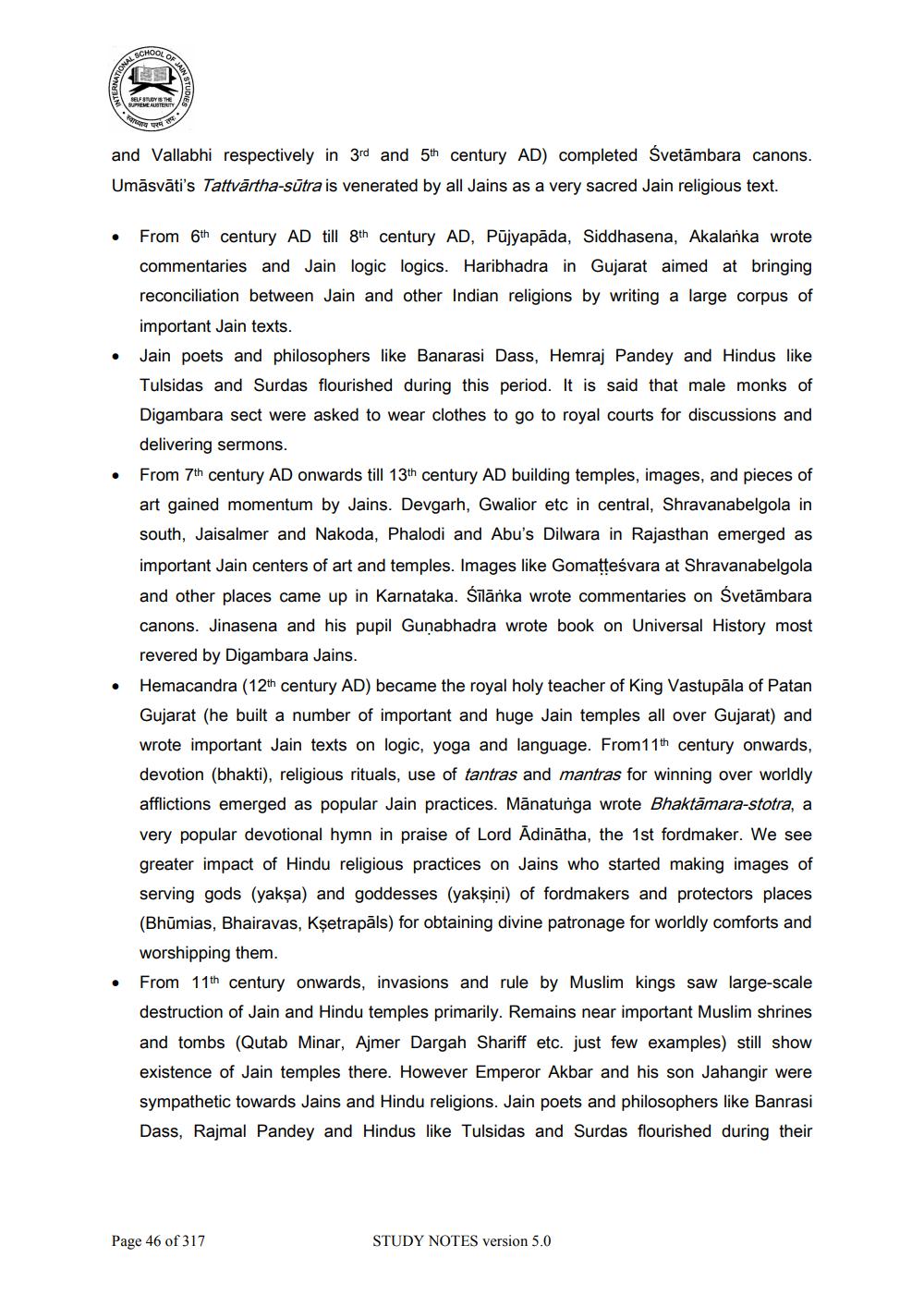________________
and Vallabhi respectively in 3rd and 5th century AD) completed Svetāmbara canons. Umāsvāti's Tattvārtha-sūtra is venerated by all Jains as a very sacred Jain religious text.
• From 6th century AD till 8th century AD, Pūjyapāda, Siddhasena, Akalanka wrote
commentaries and Jain logic logics. Haribhadra in Gujarat aimed at bringing reconciliation between Jain and other Indian religions by writing a large corpus of important Jain texts. Jain poets and philosophers like Banarasi Dass, Hemraj Pandey and Hindus like Tulsidas and Surdas flourished during this period. It is said that male monks of Digambara sect were asked to wear clothes to go to royal courts for discussions and delivering sermons. From 7th century AD onwards till 13th century AD building temples, images, and pieces of art gained momentum by Jains. Devgarh, Gwalior etc in central, Shravanabelgola in south, Jaisalmer and Nakoda, Phalodi and Abu's Dilwara in Rajasthan emerged as important Jain centers of art and temples. Images like Gomatteśvara at Shravanabelgola and other places came up in Karnataka. Śīlānka wrote commentaries on śvetāmbara canons. Jinasena and his pupil Gunabhadra wrote book on Universal History most revered by Digambara Jains. Hemacandra (12th century AD) became the royal holy teacher of King Vastupāla of Patan Gujarat (he built a number of important and huge Jain temples all over Gujarat) and wrote important Jain texts on logic, yoga and language. From 11th century onwards, devotion (bhakti), religious rituals, use of tantras and mantras for winning over worldly afflictions emerged as popular Jain practices. Mānatunga wrote Bhaktāmara-stotra, a very popular devotional hymn in praise of Lord Ādinātha, the 1st fordmaker. We see greater impact of Hindu religious practices on Jains who started making images of serving gods (yakşa) and goddesses (yakşini) of fordmakers and protectors places (Bhūmias, Bhairavas, kşetrapāls) for obtaining divine patronage for worldly comforts and worshipping them. From 11th century onwards, invasions and rule by Muslim kings saw large-scale destruction of Jain and Hindu temples primarily. Remains near important Muslim shrines and tombs (Qutab Minar, Ajmer Dargah Shariff etc. just few examples) still show existence of Jain temples there. However Emperor Akbar and his son Jahangir were sympathetic towards Jains and Hindu religions. Jain poets and philosophers like Banrasi Dass, Rajmal Pandey and Hindus like Tulsidas and Surdas flourished during their
Page 46 of 317
STUDY NOTES version 5.0




